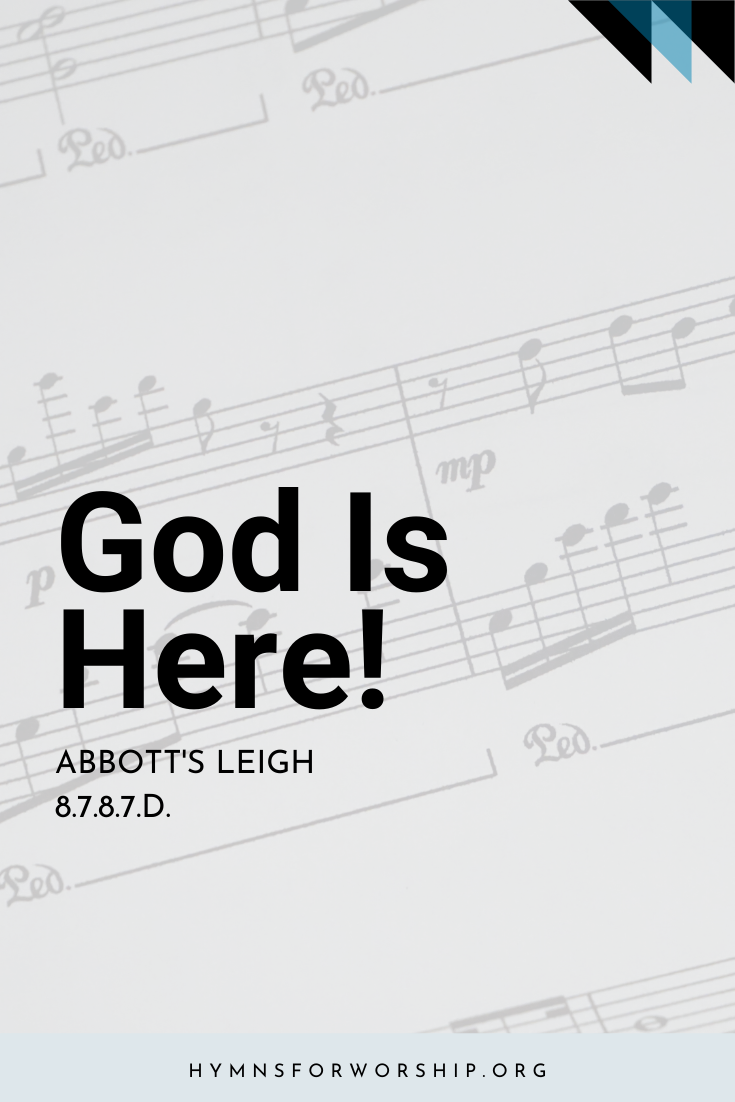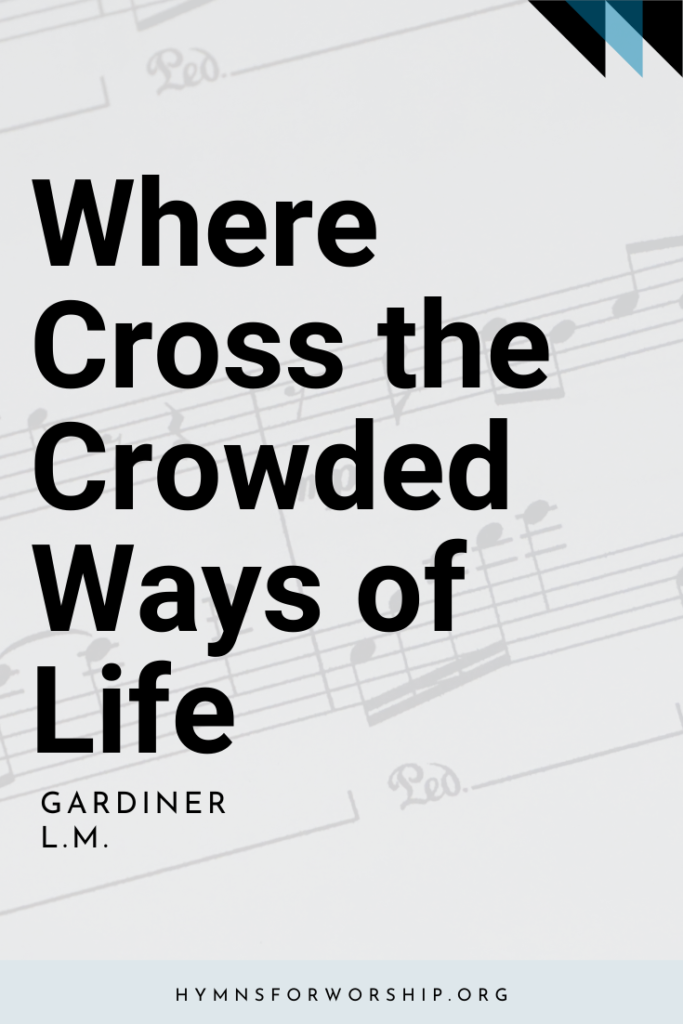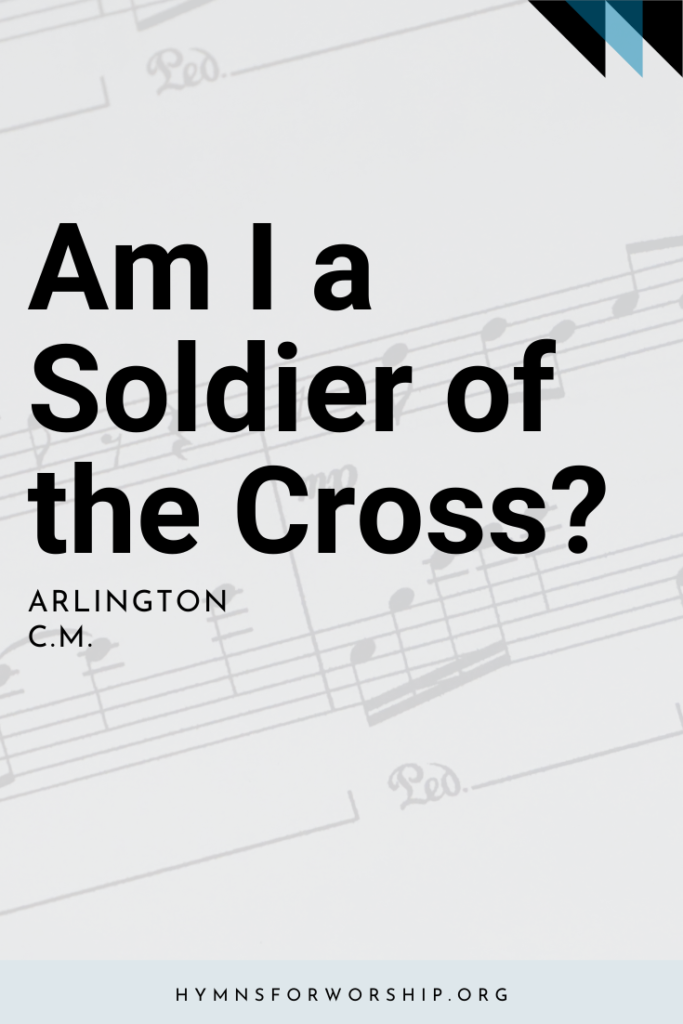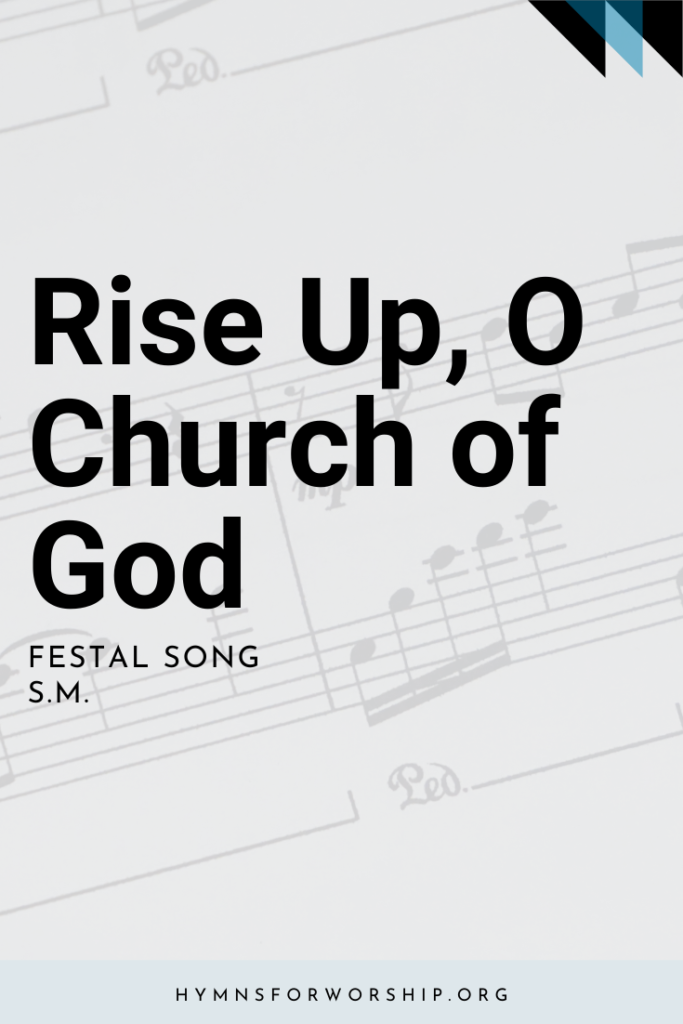WORSHIP >> OPENING OF WORSHIP
SDAH 61
God is here as we his people
meet to offer praise and prayer,
may we find in fuller measure
what it is in Christ we share.
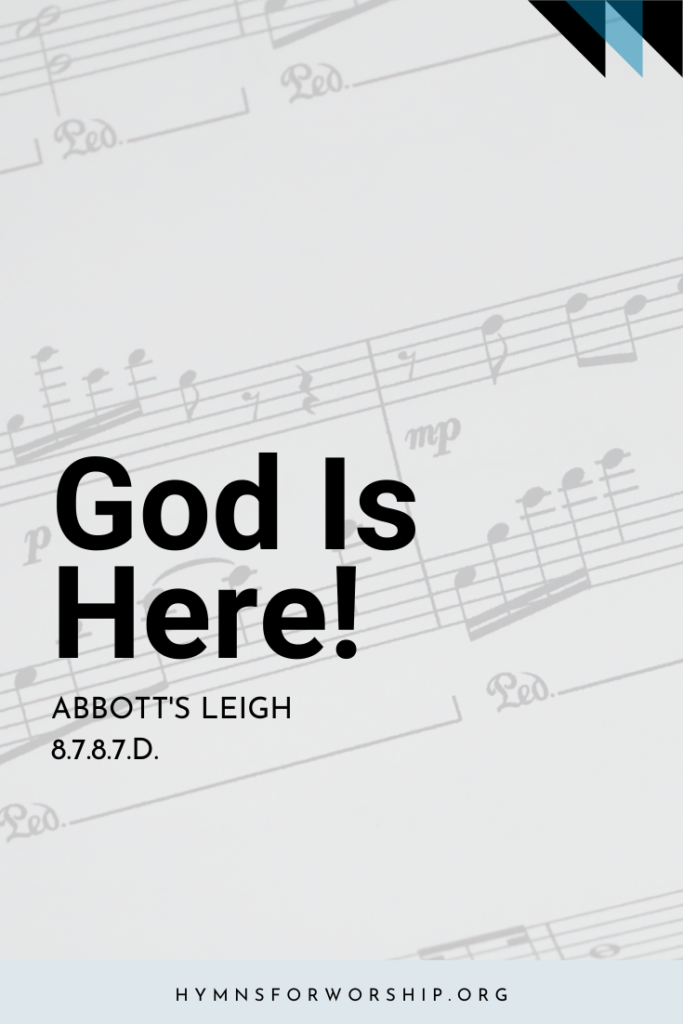

Text
1
God is here as we his people
meet to offer praise and prayer,
may we find in fuller measure
what it is in Christ we share.
Here, as in the world around us,
all our varied skills and arts
wait the coming of his Spirit
into open minds and hearts.
2
Here are symbols to remind us
of our lifelong need of grace;
here are table, font and pulpit;
here the Word has central place.
Here in honesty of preaching,
here in silence, as in speech,
here in newness and renewal,
God the Spirit comes to each.
3
Here our children find a welcome
in the Shepherd’s flock and fold.
Here, as bread and wine are taken,
Christ sustains us, as of old.
Here the servants of the Servant
seek in worship to explore
what it means in daily living
to believe and to adore.
4
Lord of all, Church and Kingdom,
in an age of change and doubt,
keep us faithful to the Gospel,
help us work your purpose out.
Here, in this day’s dedication,
all we have to give, receive:
we, who cannot live without you,
we adore you! We believe!

Hymn Info
Biblical Reference
(c) John 10:16; 2 Cor 4:5 (d) 2 Thess 2:15
Author
Fred Pratt Green (1903-2000)
Year Published
1937
Copyright
Words copyright 1979 by Hope Publishing Co., Carol Stream, IL 60188. All rights reserved. Used by permission. Music reproduced by permission of Novello & Company Limited.
Hymn Tune
ABBOTT’S LEIGH
Metrical Number
8.7.8.7.D.
Composer
Cyril V. Taylor (1907-1991)
Tune Source
1941
Alternate key
Lower key, SDAH 583
Theme
OPENING OF WORHIP
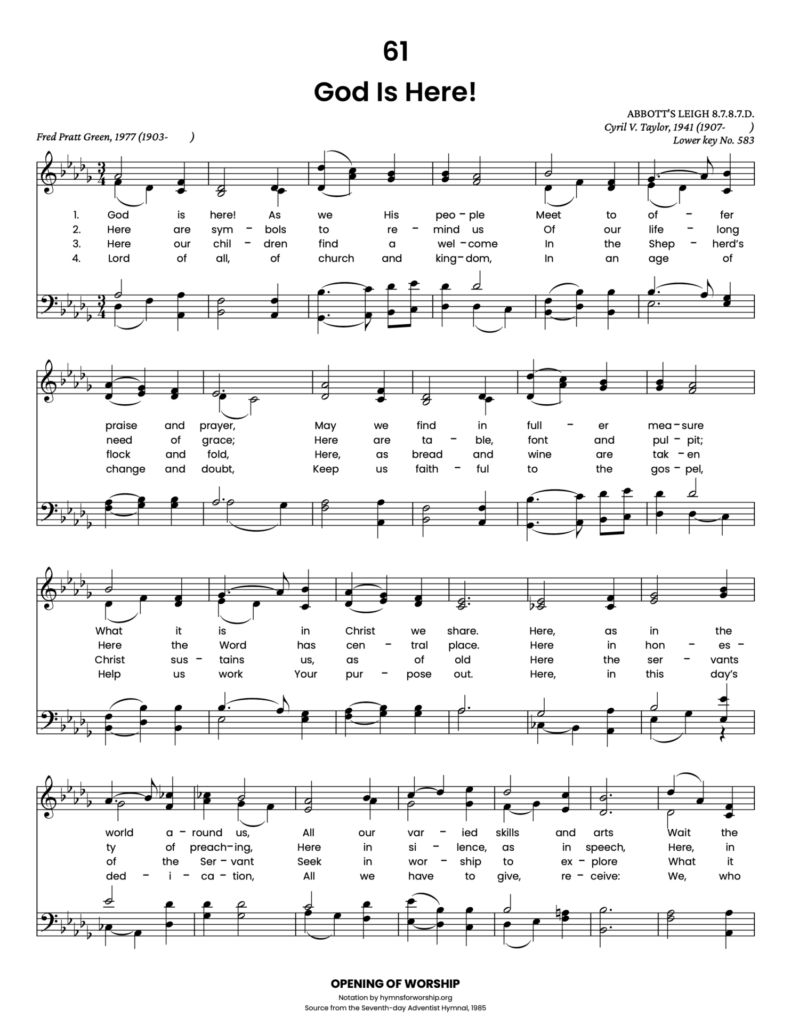
Get the hymn sheet in other keys here
Notes
Get to know the hymns a little deeper with the SDA Hymnal Companion. Use our song leader’s notes to engage your congregation in singing with understanding. Even better, involve kids in learning this hymn with our homeschooling materials.
As with many of the hymns by Pratt Green (1903- ; see Biographies), this one was written to fill a special need. Rusell Schulz-Widmar (see SDADH 13), codirector of music at University United Methodist Church, Austin, Texas, wrote: “We are in need of a hymn. It would be sung for the first time at the closing service of an eight-month-long festival centering round the themes of worship, music, and the arts… The closing service of this festival will center around the dedication of new reading desks, Communion table, and font, and finally, the rededication of the people to the life commanded of us and given through Jesus Christ… We would prefer a meter of 8.7.8.7.D since we could then use your text to introduce the tune ABBOT’S LEIGH to our congregation.”
In stanza 2, the original line “Here the cross has central place” has been changed to “Here the Word has central place” to reflect the feeling of the Seventh-day Adventist Church in this regard.
The tune ABBOT’S LEIGH was written by Cyril Vincent Taylor in 1941 when he was on the staff of the British Broadcasting Company for the planning of religious services on the air, Because of the bombing of London (World War II), the staff had been evacuated to Bristol. Then when Bristol was under air attack, he moved out to the village of Abbot’s Leigh, where he stayed with a friend for four or five months. He tells about writing his first hymns tune: “On that Sunday morning I sat down at the piano in their dining room. No one else was there. I had to spent most of my Sundays at home listening to the broadcasts. I wrote the outline of the tune that morning, intending it to be sung to ‘Glorious Things of Thee Are Spoken.’ Some have speculated that I wrote it as an alternative to ‘Deutschland über alles!’ I don’t remember that that was so. Of course, there were many critics who wrote the BBC asking, ‘Why do you sing a German tune?” But at least consciously it was not for that reason. And then like most tunes it had to be touched up in various ways. The Oxford Press asked me to write a different ending. Being young and having no professional skill in those matters, I altered it. Well, I can see now that I was obviously wrong [in changing it], of they were. They printed it like that, but they eventually discarded the leaflet, I’m glad to say. Later it was put in Hymns Ancient and Modern 1950, and the BBC Hymnbook… Just before being put in the hymnbook, one of my colleagues, Dr. George Thalben Ball, the great organist, seized it, saying we must broadcast it in a little program we had each morning called Lift Up Your Hearts. Hymns were played before and after to provide a kind of buffer; and this is how the tune first became known—it was recorded by the BBC orchestra for use before and after the program. All the same, it has taken many years to reach the peak of familiarity which it now knows” (The Hymn, January 1984).
He continues by telling how some have had difficulty with the big downward leap in the melody in the final phrase, and how he solved it. “When I was in a village in the country of Dorset and had to train our little choir, the only way I could get them to go right down was physically to disappear beneath the choir stalls. When they saw me go down, they went down with me!” In spite of this small difficulty, it has become one of the most successful of the modern hymn tunes.
Born December 11, 1907, in the coal mining town of Wigan, Lancashire, England, Taylor sang in the choir of Magdalen College, Oxford, until age 16. Then he went to Christ Church, Oxford, where he earned a B.A. degree. After graduate study at Cambridge, he became a priest in the Church of England and served in a number of posts before spending 14 years as assistant to the head religious broadcasting at the BBC. As a theologian and musician, he was one of the editors of the BBC Hymnbook, which included some 20 of his hymn tunes. In 1953 he was appointed warden and chaplain of the Royal School of Church Music; in 1958, perpetual vicar of Cerne Abbas, Dorset, with responsibility for village parishes nearby; and in 1969, precentor and residenciary canon at Salisbury Cathedral. Associated with Hymns Ancient and Modern for more than 20 years, he helped compile two supplements, 100 Hymns for Today, and More Hymns for Today, which were merged with the best of Hymns Ancient and Modern to become New Standard Hymns Ancient and Modern. An anthem setting of “God is here,” arranged for choir and brass by Austin Lovelace, has been published by Oxford University Press.
See SDAH 583, “You That Know the Lord,” for the same tune in a lower key.

